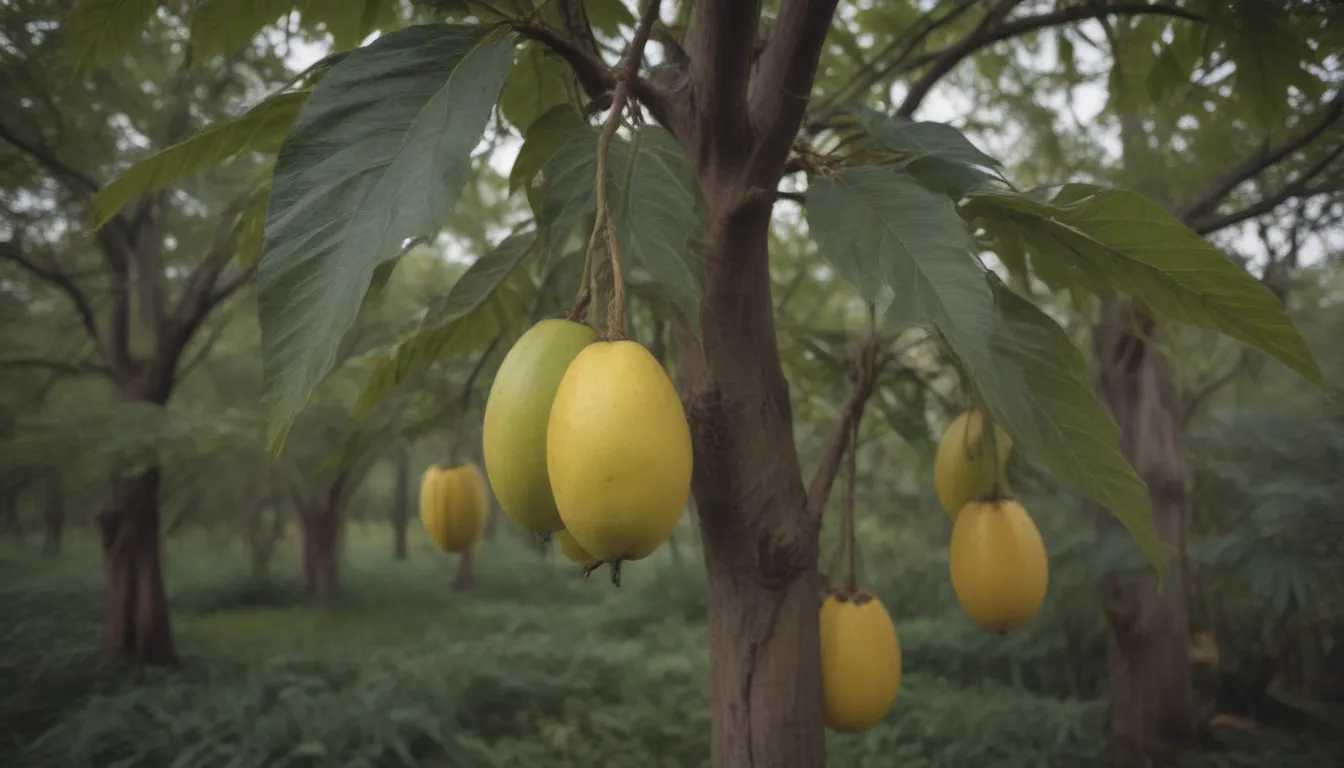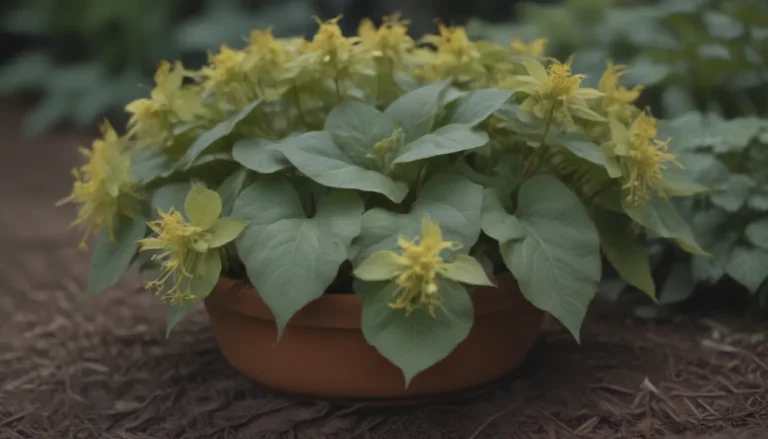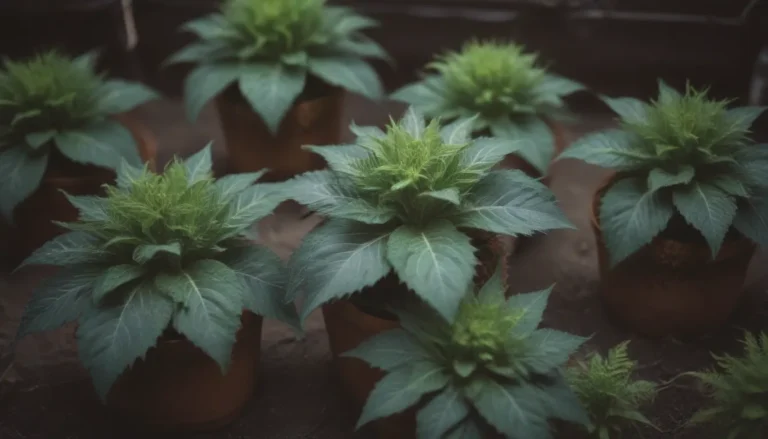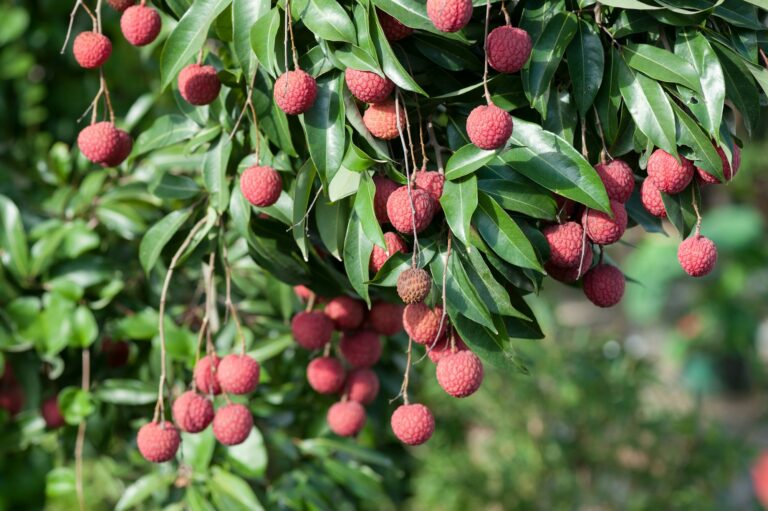The Ultimate Guide on How to Grow and Care for Pawpaw Trees

Are you intrigued by the idea of growing your own tropical-looking tree that produces delicious fruit? If so, then the pawpaw tree might be the perfect addition to your garden. In this comprehensive guide, we will explore everything you need to know about growing and caring for pawpaw trees, from planting to pruning and everything in between.
What is a Pawpaw Tree?
The pawpaw tree, also known as Asimina triloba, is a small deciduous tree that yields the largest fruit native to North America. It belongs to the Annonaceae family, which consists mainly of tropical plants. However, the pawpaw tree is native to the eastern United States and can be found in 26 states, excluding Florida and most northeastern states. These trees can grow up to 25 feet tall and produce maroon-colored blossoms with 6 petals in the spring. In shady areas of established forests, they tend to be much smaller, ranging from 2 to 12 feet in height. The leaves of the pawpaw tree are dark green, shiny, and oval-shaped with pointy ends, reaching up to 12 inches in length. During the fall season, the foliage transforms into various shades of yellow. The pawpaw fruit is the highlight of these trees, ripening in the fall, and is often described as custard-like with a flavor that is a mix between a banana and a mango, though some find it tastes plainer, almost like a raw potato. It’s important to note that while the fruit is edible, the skin and seeds should not be consumed due to the presence of annonacin, which is toxic to nerve cells.
Pawpaw Care: Tips and Tricks for Success
With the right knowledge about growing requirements and care practices, you can successfully cultivate a pawpaw tree in your garden for both ornamental beauty and delicious fruit. Here are some essential tips for ensuring the health and vitality of your pawpaw tree.
Light
Pawpaw trees thrive in partial shade, as they are naturally found in the understory of forests. Young trees, in particular, benefit from shaded conditions to avoid leaf scorching caused by direct sunlight. Mature pawpaw trees can tolerate full sun, especially when planted in orchards, resulting in a more pyramid-like shape compared to trees in shaded areas with spreading branches and fewer lower limbs.
Soil
Rich and well-draining soil is essential for pawpaw trees to thrive. If your soil is nutrient-poor, consider adding compost to improve its quality. While pawpaw trees can grow in heavy clay soil, proper drainage is crucial for their health. Aim for slightly acidic to neutral soil pH levels for optimal growth.
Water
Young pawpaw trees require regular watering, but it’s important to ensure that the soil drains effectively to prevent waterlogging. Established trees located near a water source or that receive sufficient rainfall may need minimal supplemental watering. If your pawpaw trees are planted in a sunny location or orchard, consider providing additional irrigation to maintain adequate soil moisture.
Temperature and Humidity
Pawpaw trees are cold-hardy and can withstand temperatures as low as -20 degrees Fahrenheit. They thrive in warm, humid summers, which promote growth and fruit production. The seasonal variation in temperature and humidity encourages dormancy during winter, preparing the tree for a productive growing season.
Fertilizer
Regular fertilization is essential for healthy growth and fruit production in pawpaw trees. Consider applying a well-balanced fertilizer, such as a 10-10-10 formula, in spring and early summer. Alternatively, enrich the soil with organic matter like compost, fish emulsion, or manure to provide essential nutrients for the tree’s development.
Propagating Pawpaw Trees
Pawpaw trees can be propagated through grafting or cuttings, but seed propagation is generally the most successful method. Planting pawpaw seeds in the ground or starting them in pots can lead to successful tree establishment. Here’s how you can grow pawpaw trees from seeds:
- Harvest pawpaw seeds from ripe fruits.
- Sow the seeds in well-draining soil in pots or directly in the ground.
- Wait for the seeds to germinate and develop into seedlings.
- Transplant the seedlings into larger containers or the garden once they are established.
Overwintering
Pawpaw trees require a period of dormancy during winter to prepare for fruit production in the following year. Mature trees can withstand cold temperatures without additional care, while young trees in pots should be sheltered in a frost-free location to prevent freezing. Avoid watering young pawpaw trees during dormancy to promote healthy growth in the spring.
Common Pests and Plant Diseases
While pawpaw trees are relatively pest-resistant, they may suffer from fungal diseases like powdery mildew and black spot in high humidity conditions. The pawpaw peduncle borer and Zebra Swallowtail butterflies can also affect tree health but are usually not a severe threat. Monitoring and managing pests and diseases promptly can help maintain the health of your pawpaw trees.
Common Problems with Pawpaw Trees
Moisture management and pollination are two common issues that pawpaw tree growers may encounter. To address yellowing leaves caused by overwatering or poor drainage, improve soil conditions and adjust watering practices accordingly. Lack of fruit production can be remedied by hand pollination between genetically different trees to ensure successful fruit set.
From planting to pruning, caring for pawpaw trees requires attention to detail and understanding of their specific requirements. With the right information and practices, you can enjoy the beauty and bounty of these unique trees in your garden.
Remember, growing pawpaw trees is a rewarding experience that offers both visual appeal and delicious fruit for your enjoyment. By following the tips and guidelines outlined in this guide, you can cultivate healthy, productive pawpaw trees that will thrive for years to come. Happy gardening!





